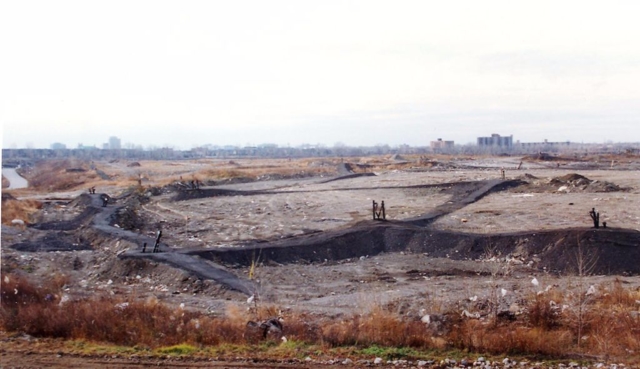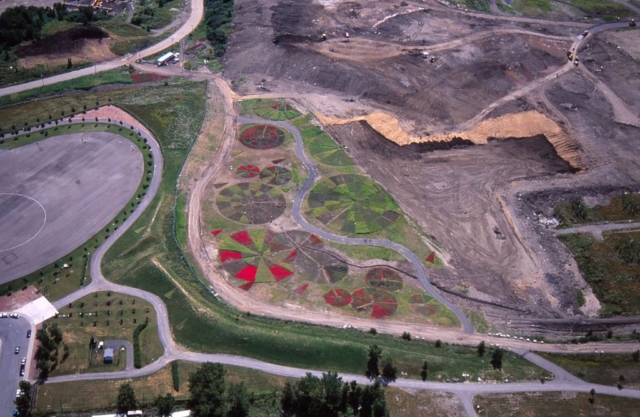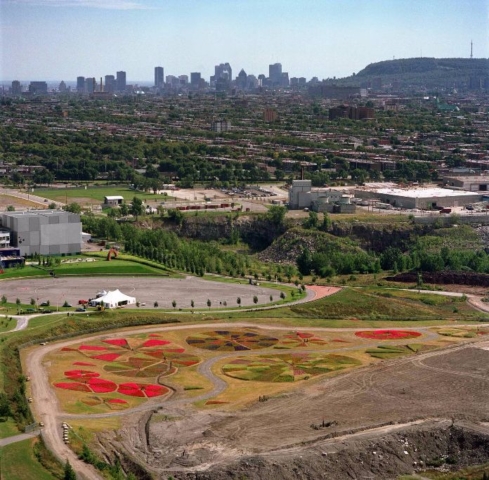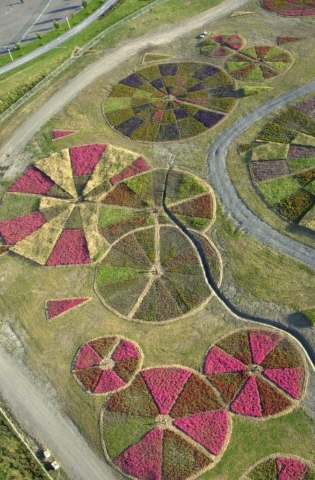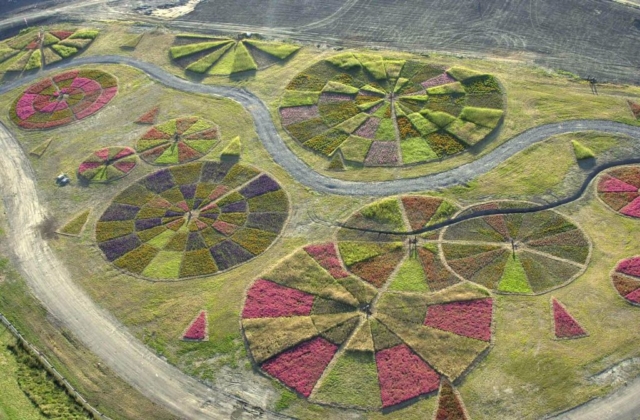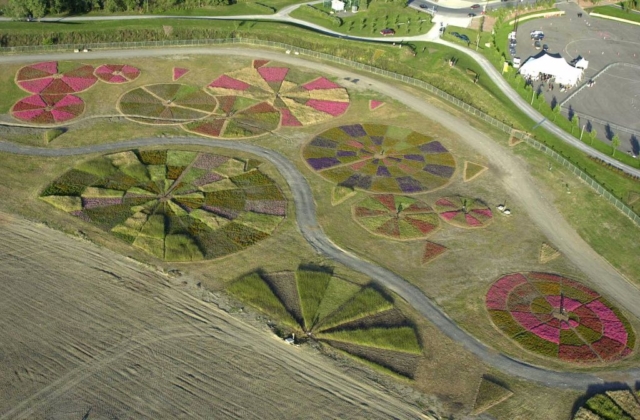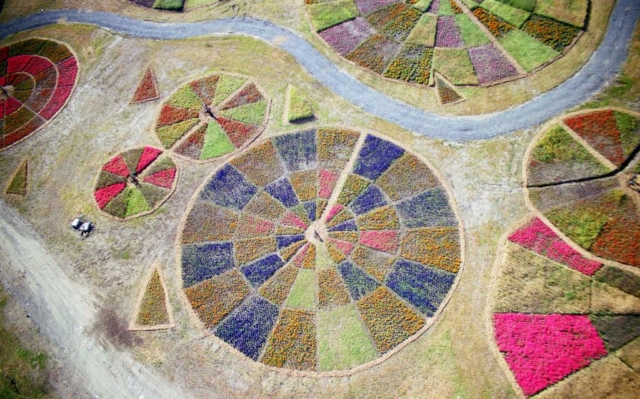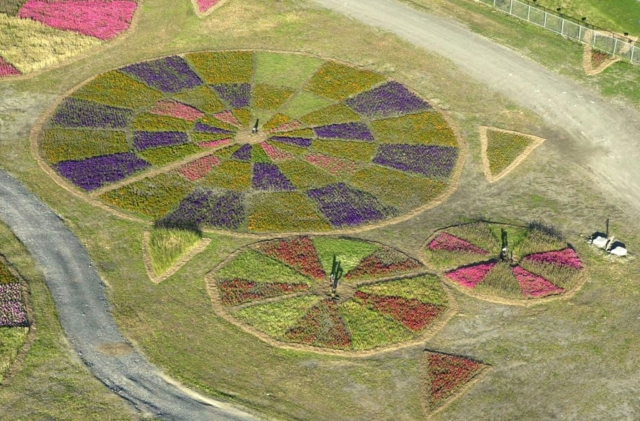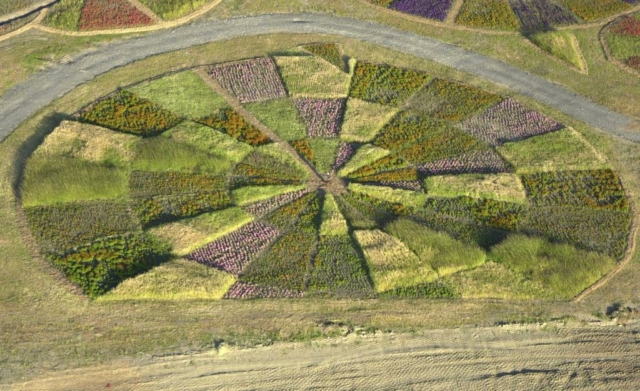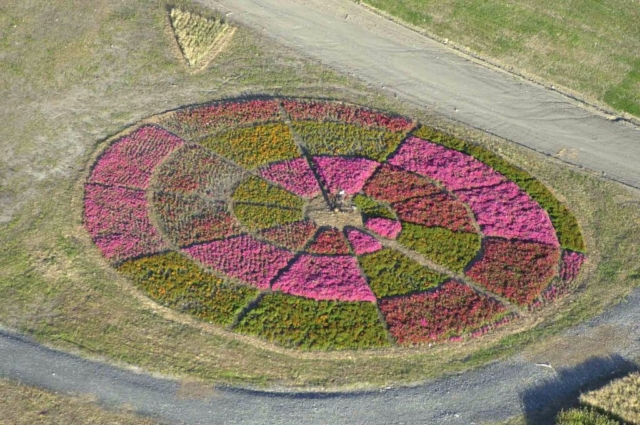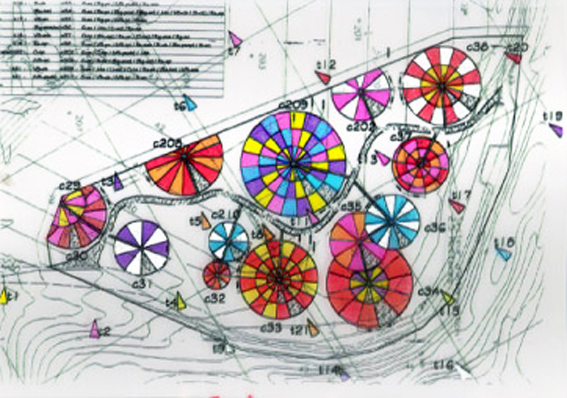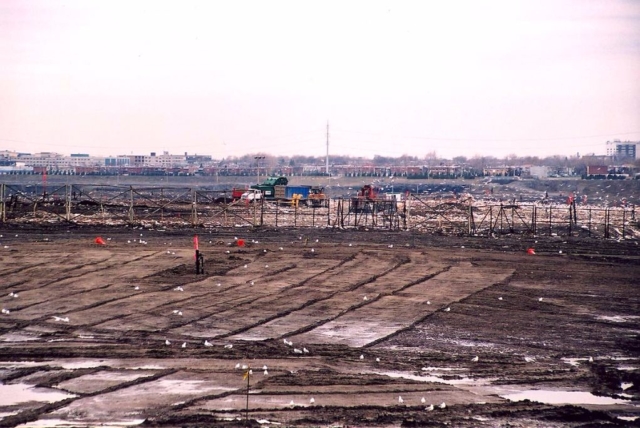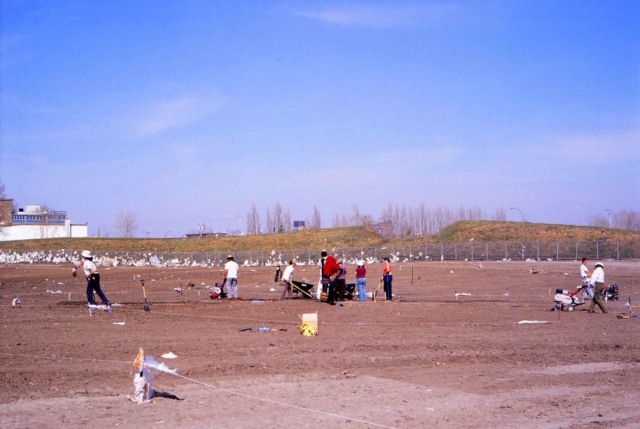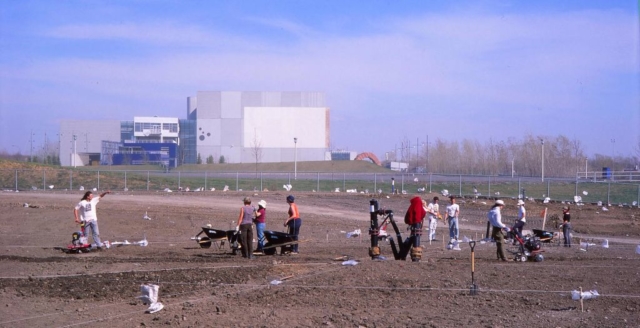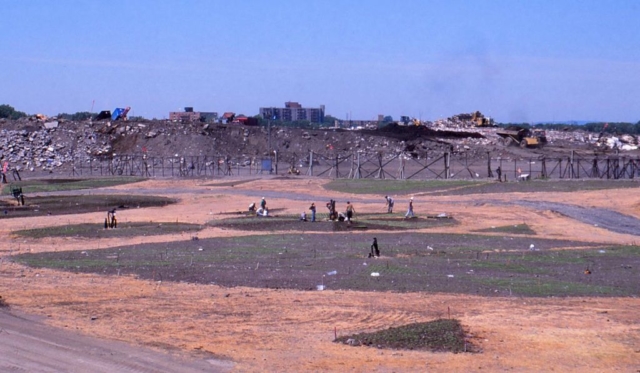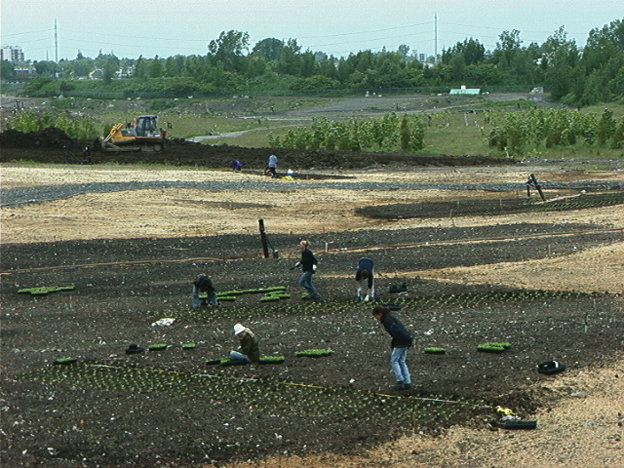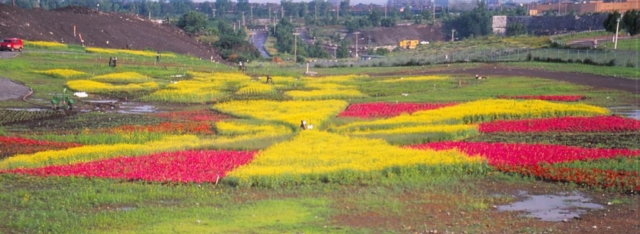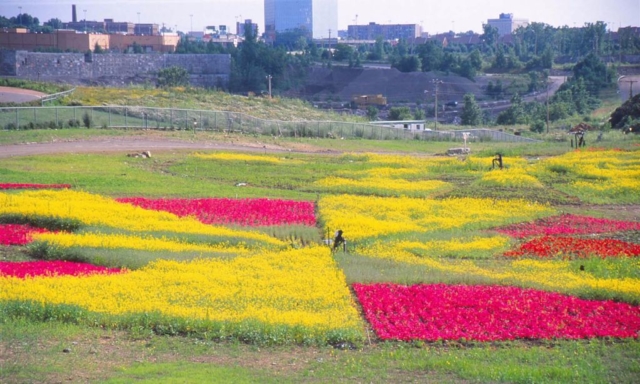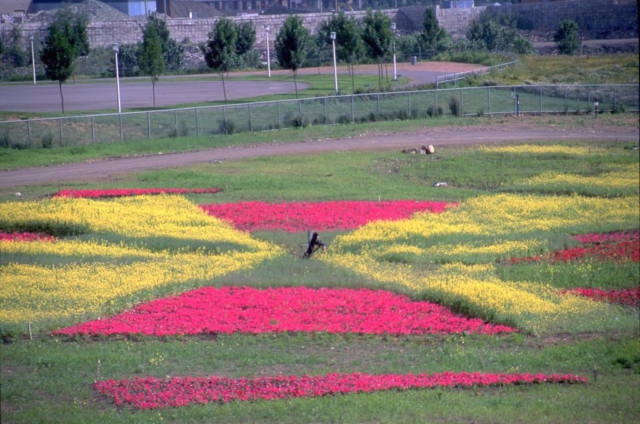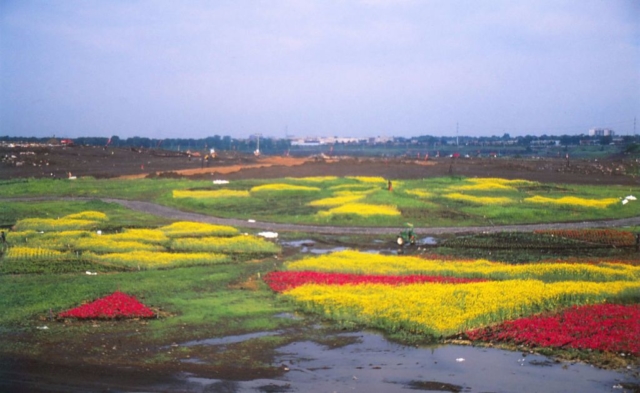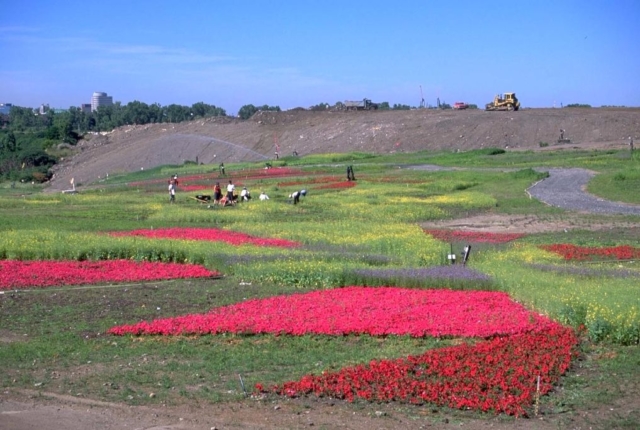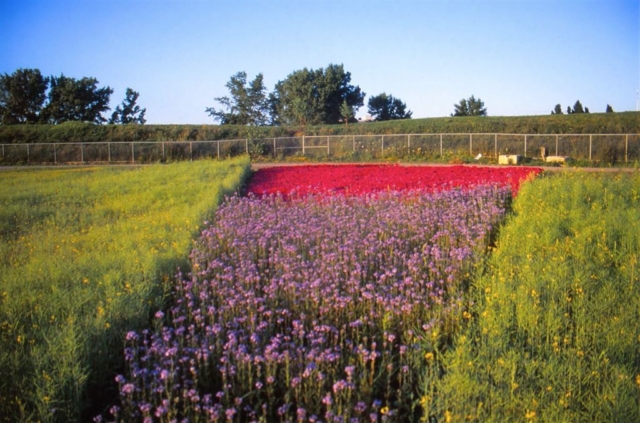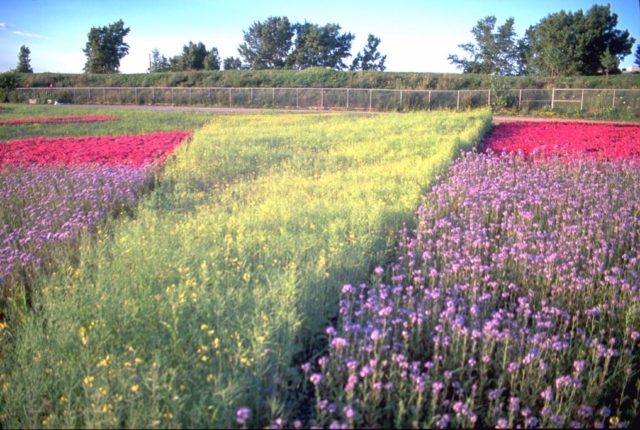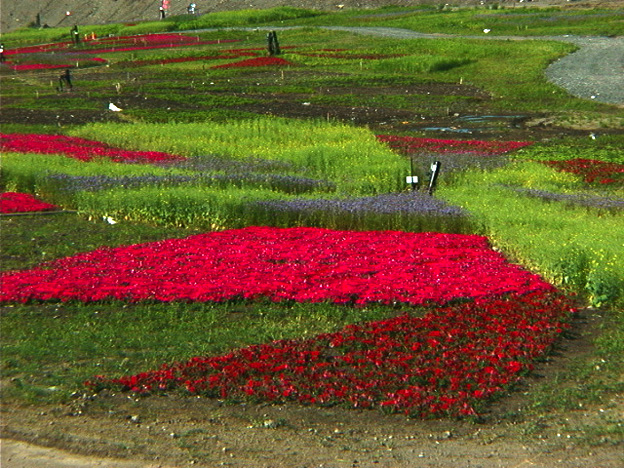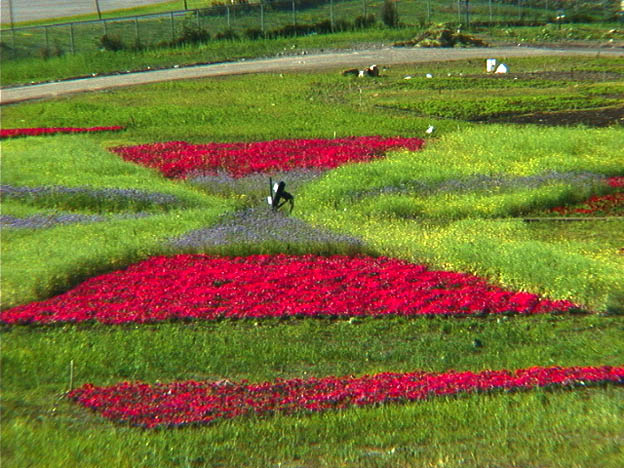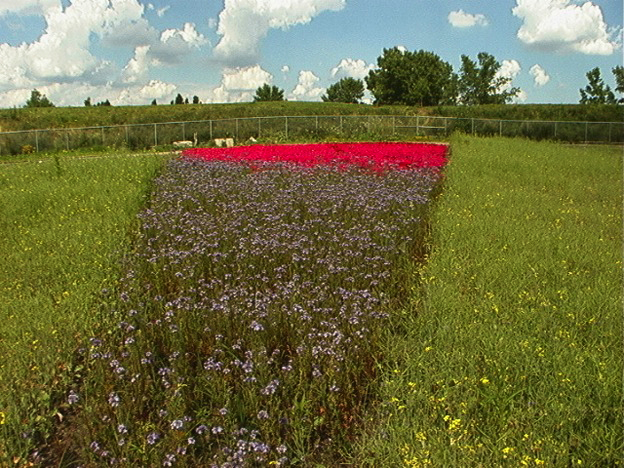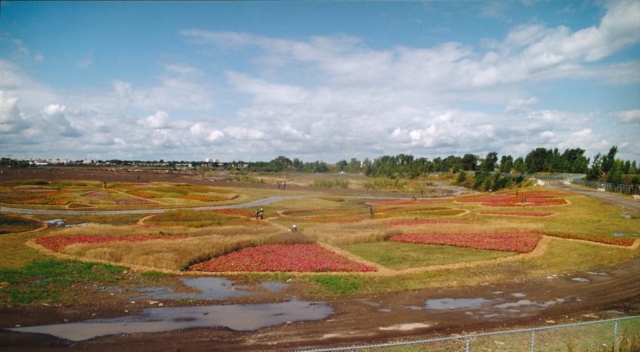Le Jardin des Capteurs, Montréal, Canada 2000-2002
Ce projet a été réalisé dans une décharge à ciel ouvert, immense no man’s land de 100ha en plein cœur de Montréal.
Ce lieu a servi d’abord de carrière, puis de site d’enfouissement de déchet. Il est entouré d’habitations qui ont souffert à la fois des émanations pestilentielles qui s’en dégagent et de l’immense dégradation esthétique qu’elle implique.
Mon dessin accentue les éléments propres au site et notamment les capteurs de biogaz chargés de la récolte du méthane qui s’échappe des déchets. Le Jardin des Capteurs a permis de montrer le fonctionnement du site d’enfouissement. L’activité de la décharge n’a jamais été interrompue par notre travail.
Un contraste se crée entre ce premier plan organisé, décidé et bien intégré et le deuxième plan, qui est encore un cloaque où des camions continuent à décharger des déchets. Ce jardin est à la croisée de trois approches de la nature qu’elle intègre : la première utilitaire, la seconde esthétique, la troisième, environnementale et sociale.
Plantes utilisées : pétunia/ tagetet / cosmos /Sarrasin / colza / phacélie / sedum / aster / échinacée / phlox / andropogon
This project is located in an open dump—a huge no man’s land of 100 hectares (247 acres) in the heart of Montreal.
The site was originally a quarry. Then it was used as a garbage burial. Residents living in the buildings around the dump are exposed to the stench of the garbage, and witness the esthetic deterioration of the site.
My design accentuates elements found at the site, particularly the biogas sensors that capture methane emanating from the trash. The Garden of Sensors demonstrates how the garbage burial functions. Activity at the dump was never interrupted by our work.
There is a contrast between the foreground that’s organized, planned and well-integrated in the landscape, and the background, which is still a huge mess with trucks continuing to bring garbage to the dump. The garden is a cross between three different approaches to nature: the first, utilitarian; the second, esthetic; and the third, environmental and social.
Plants: petunias / tagetes / cosmos / buckwheat / rape / phacelias / sedum/ aster / echinacea / phlox / andropogon


